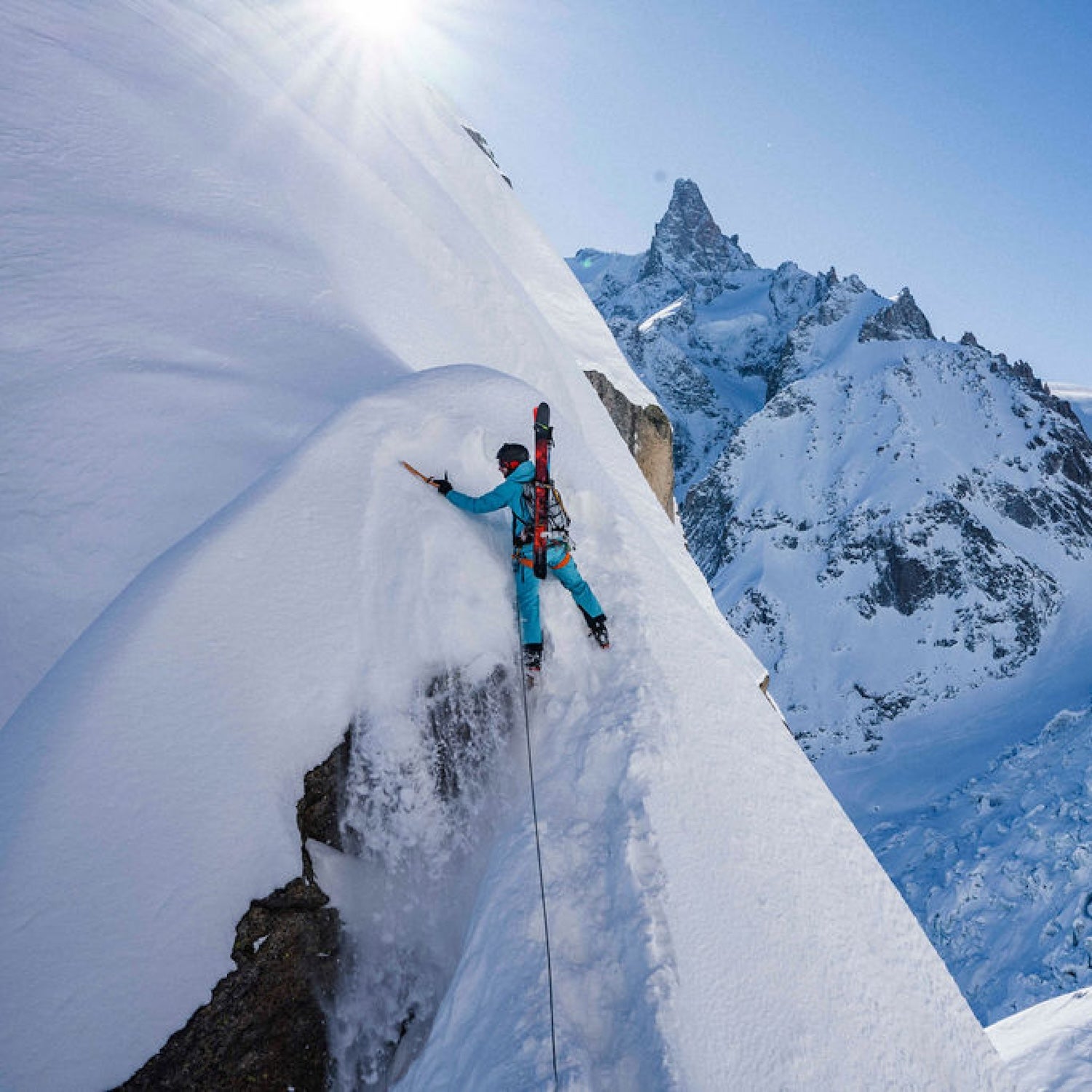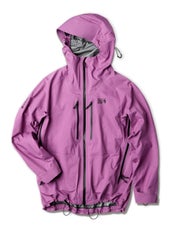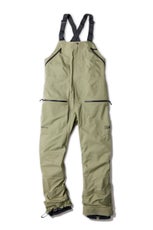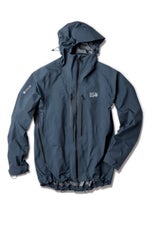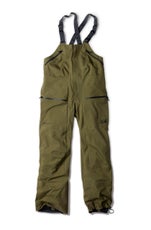Never heard of Vivian Bruchez? Picture the Alps’s most iconic peaks that you have heard of. Perhaps it’s the east face of the Matterhorn or the west face of Mont Blanc. Bruchez has skied them both, plus nearly 50 first descents in the Alps, while notching iconic summits and steep lines that have earned the Chamonix native respect in the ski-mountaineering community (and a healthy online following). His feats have also endeared him to the product team at Mountain Hardwear, who have worked with Bruchez to develop some of the sport’s most innovative outerwear.
“As Viv continues to progress in the mountains, we needed to continue to solve the balance between lightweight and packable products that maximize durability and storage,” says Chris Curtis, senior product line manager at Mountain Hardwear, on the prototype jacket-and-bib combo Bruchez has been using on these groundbreaking missions (pictured).
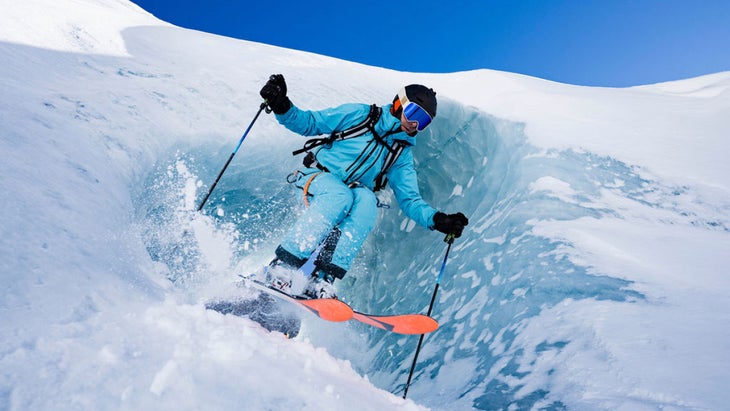
The hard-earned R&D feedback resulted in the new and (available in men’s and women’s cuts for the and ). The revamped design is highlighted by more sustainable materials while offering a progressive fit optimized for efficient mobility across the backcountry. C-Knit is short for circular knit—Gore’s lightest three-layer material. It integrates a face fabric with Gore’s new ePE membrane—a svelte and durable expanded polyethylene layer that’s notably free of PFAs chemicals to help reduce its carbon footprint—plus a backer material that’s super thin and lightweight to increase breathability. That material is then applied judiciously so the top and bottom function well together, with pit zips that offer access to secure internal pockets configured for backcountry gear storage—reinforcing the focus on performance under heavy exertion.
“Our athletes like Vivian Bruchez demand the most lightweight and protective materials while seeking their most wild paths,” Curtis says of the engineering task to elevate and simplify gear that meets the needs of mountaineers. As for Bruchez, we let the limit-pushing pioneer describe his own unique path in the interview below. He discusses testing the High Exposure Gore-Tex C-Knit Jacket and Bib (pictured in an early testing color not available for sale) and how it helps regulate his most exposed missions, creating comfort in the unknown.
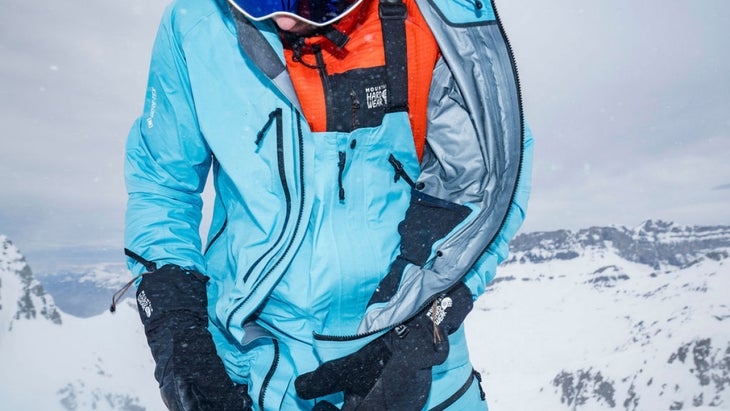
şÚÁĎłÔąĎÍř: If you’re attempting a big first descent, how do you layer up, from head to toe?
Bruchez: My perfect kit for winter mountain ski trips with ambitious projects entails four layers for my upper body. I always carry two layers. The first one, directly in contact with my skin, has to be breathable and light. I love the . The second layer is a windstopper fleece. I carry the all the time. In my backpack, I always have a down jacket—I love the . Depending on the temperature and the period of winter, I can change the down jacket to carry something warmer, like the Ghost Whisperer. The last layer is the High Exposure Gore-Tex C-Knit Jacket because it’s light, compact, and versatile—really strong! For the legs, I wear the and High Exposure Gore-Tex C-Knit Bib to complement the performance of my upper-body core.
How does the jacket and bib technology translate to uphill movement on the mountain and the descent?
Freedom of movement, especially in the legs, allows for transitions from ski to climb seamlessly. I like to wear them with enough room so all the various movements through an expedition are effortless. Breathability is very important, and it’s reflected in the technology. (With a breathable jacket, I never open the vents.) Pockets must be accessible and large enough to store equipment easily, and I’m increasingly using water flasks that I place along my body to keep the water temperature constant—water stored in the bag becomes very cold, and I don’t drink it. The combination of mobility, breathability, and storage enable one to discover the while in the mountains.
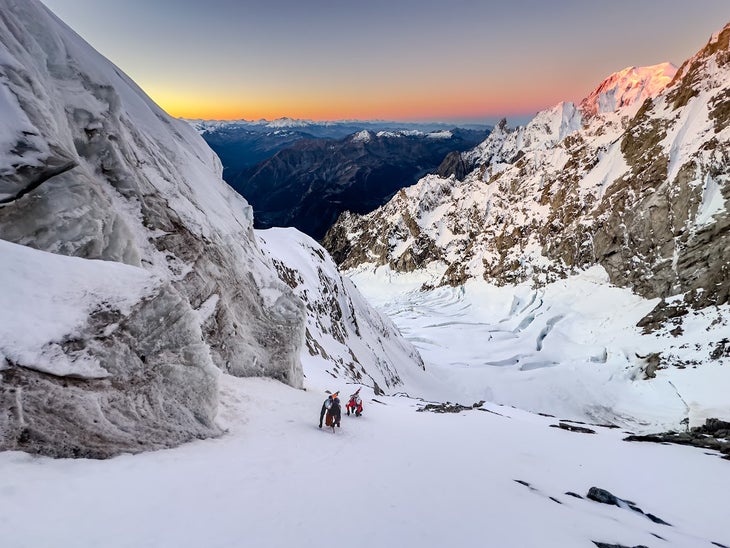
When did you last need to be mindful in a challenging situation where you were thankful for protection from the elements?Â
On our last mountain outing, on November 1, I left the Chamonix Valley at 1 a.m. to hike and climb all night to 4,000 meters. We reached the summit at 10 a.m. It was a very long day, and we got home at 5 p.m. We opened two new ski routes on two summits never skied before. On the Mont Blanc massif, that’s exceptional! The weather conditions weren’t too complicated, and I didn’t need my down jacket because it wasn’t cold. I walked all night with my first two layers of clothing, then added the Gore-Tex C-Knit outerwear on the ridge, where it protected me from the wind. It allowed me to give the best of myself during this mission and met my expectations throughout all the transitions. I demand confidence in my equipment. I meticulously select every item I carry in my bag. I know that if I’m stuck in the mountains, I’ll be able to dig a hole in the snow and take shelter from the elements.
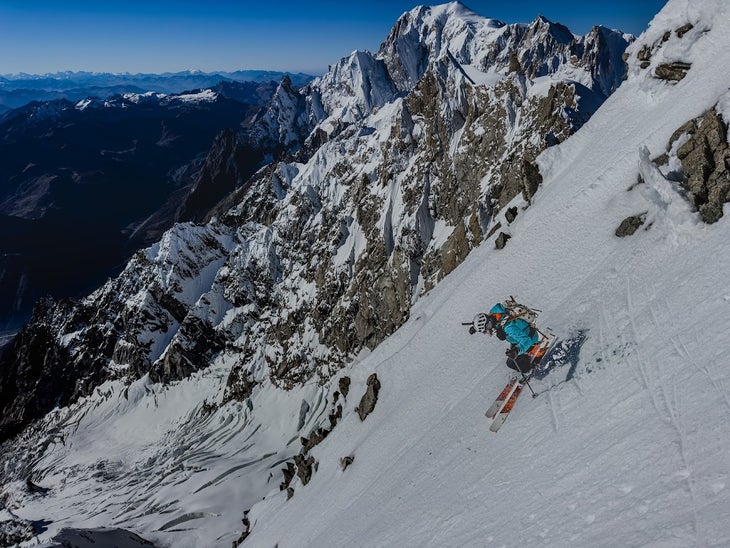
What specifically do you look for in your outerwear?
The packability of my outerwear increases my comfort in the mountains. At times, I need to reduce the bulk in my backpack with all the other tools my missions require. I need a very small, light bag with a lot of gear inside. I’m always learning new techniques to optimize my gear. Every item I carry has multiple uses. The goal is to continually progress in my sport and to evolve my clothing and equipment along the way, ultimately leading to comfortable mountain travel.
What do you stash in the pockets?
I try to keep the minimum amount of things in my pockets, because often, with the harness and the backpack, it interferes with my movements. However, I still keep my phone in a jacket pocket to take photos and my avalanche transceiver (DVA) in a pocket of my ski pants.
Any snacks?Â
I’ve tried many different energy bars, but for the past year I’ve been using bars and gels from . They offer the best weight-to-energy ratio for long outings. I always take a small piece of cheese and some sausage for the pleasure.
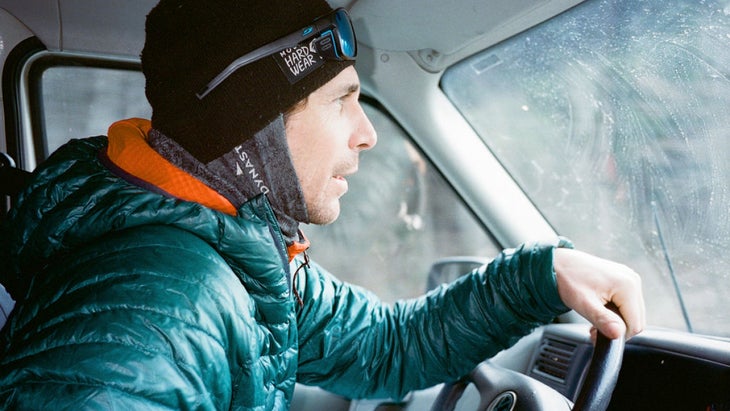
What gets you most excited for the ski season ahead?
The more experience I gain, the more I realize that I continue to learn from the mountains and the people who share the rope with me. I love learning, discovering new places, new cultures, and new approaches. I enjoy sharing my experiences, and I’m excited to find beautiful stories—the ones that make sense to me and carry a constructive message personally, for my family, and for the larger community of outdoor enthusiasts.
Any big goals you can tease?
You’ll have to follow the YouTube series on my channel, , with lots of tips, beautiful lines, and good vibes!
Mountain Hardwear, Inc., was founded in 1993 and is based in Richmond, CA. We exist to encourage and equip people to seek a wilder path in life. For 30 years, we’ve built essential equipment for climbers, mountaineers, and outdoor athletes and have supported expeditions on the world’s highest peaks. Relentless precision continues to inspire everything we do — our designers sweat every stitch and detail to continuously improve function, durability, and comfort.
Mountain Hardwear is a wholly-owned subsidiary of Columbia Sportswear Company that distributes its products through specialty outdoor retailers in the United States and 34 countries worldwide:

